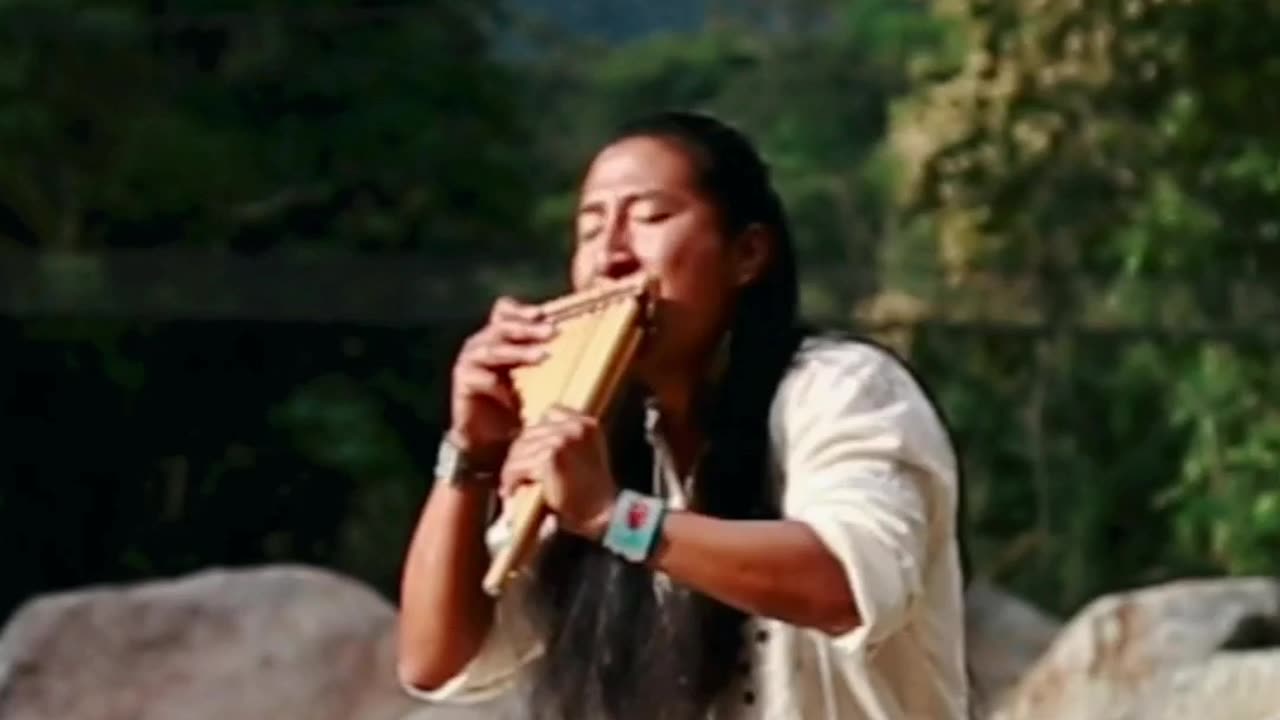Premium Only Content

Tribal Music
Tribal music is deeply rooted in cultural traditions around the world, often characterized by its use of indigenous instruments that reflect the history and environment of a particular community. These instruments have diverse origins, each telling a unique story.
One such instrument is the didgeridoo, originating from Aboriginal Australian tribes. Crafted from eucalyptus tree branches hollowed out by termites, it produces a distinct, resonant drone sound. Its history dates back over 1,500 years and holds a vital role in Aboriginal ceremonies and storytelling.
In Africa, the djembe drum stands as an emblem of rhythm and community. Originating from the Mali Empire, it's carved from a single piece of hardwood and covered with goat skin. The djembe's vibrant beats communicate both joy and sorrow, used in celebrations, rituals, and communication among African tribes.
The Native American flute, known for its melodic tones, has roots in various Indigenous communities across North America. Traditionally crafted from cedar, willow, or other woods, its music connects with nature and spirituality, accompanying ceremonies, dances, and storytelling.
The rainstick, associated with Indigenous South American cultures, imitates the sound of rainfall. Made from cactus spines inserted into a hollowed-out cactus stem, it was historically used in rain dances and healing rituals.
These instruments, deeply embedded in tribal histories, serve as more than just musical tools; they embody cultural identities, connect communities to their heritage, and bridge the gap between the past and present, reminding us of the rich diversity of human expression.
-
 30:57
30:57
Her Patriot Voice
13 hours ago $2.57 earnedDemocrats More Unhinged Than EVER Before!
22.5K24 -
 29:13
29:13
Clownfish TV
21 hours agoGen Z are Becoming the Boomers?! | Clownfish TV
2.61K24 -
 1:48:31
1:48:31
Squaring The Circle, A Randall Carlson Podcast
16 hours agoMEGA Tsunamis and the formation of our World ft. Dr. Dallas Abbot
5.5K1 -
 13:13
13:13
Mrgunsngear
13 hours ago $1.09 earnedStreamlight TLR-1 HP Review: Can It Dethrone Surefire?
4.57K4 -
 6:53
6:53
Rena Malik, M.D.
22 hours ago $0.29 earnedWhy Antidepressants Wreak Havoc on Your Sex Life?! | Urologist Explains How to Boost your Libido
4.53K2 -
 1:00:00
1:00:00
BEK TV
2 days agoMIKE MOTSCHENBACHER ON NORTH DAKOTA POLITICS, TEA PARTY ROOTS, AND THE 2026 ELECTION
5.68K -
 15:31
15:31
Breaking Points
1 day agoIs Trump Planning VENEZUELA Regime Change?
27.6K15 -
 2:06:05
2:06:05
"What Is Money?" Show
2 days agoTrump Family Bitcoin Bet Will Trigger Nation-State FOMO w/ Matt Prusak (CEO American Bitcoin)
9.34K -
 1:04:36
1:04:36
Dialogue works
3 days ago $3.66 earnedMohammad Marandi: Iran Just Gave Israel a FINAL Warning…
16.3K6 -
 9:20
9:20
daniellesmithab
1 day ago3 Bad Laws
18.9K7